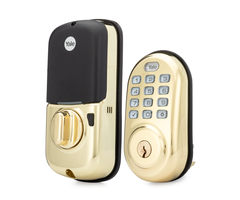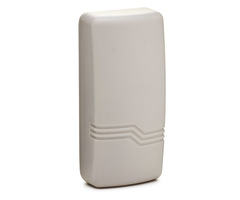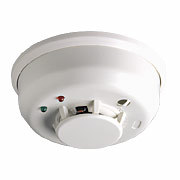Alarm Grid Holiday Buying Guide 2020 - Environmental Sensors
Posted By Michael GorisWe're checking out the best environmental sensors for our top security system picks for the 2020 holiday shopping season, which are the Honeywell Lyric, the Qolsys IQ Panel 2 Plus, and the 2GIG GC3e. Environmental sensors include life-safety sensors, flood sensors, and temperature sensors.
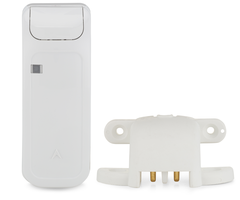
If you haven't seen our alarm panel 2020 holiday buying guide or our security sensor 2020 holiday buying guide, then be sure to go and check those out, as they will give a nice introduction to this buying guide for environmental sensors. You will need to make the same compatibility considerations for environmental sensors as you do for security sensors. The sensors you choose must be compatible with your system and communicate at a wireless frequency that is accepted by the alarm panel you are using.
As a refresher, here are the compatible sensor lineups for our recommended systems. Just like last time, the sensor lineups that are italicized and underlined represent the encrypted sensors that provide extra wireless security and protection.
- Honeywell Lyric - Honeywell SiX Series, Honeywell 5800 Series, 2GIG 345 MHz Series
- 2GIG GC3e - 2GIG eSeries Encrypted Sensors, 2GIG 345 MHz Series, Honeywell 5800 Series
- Qolsys IQ Panel 2 Plus 319.5 MHz - DSC PowerG Sensors, Qolsys S-Line Sensors, Qolsys Legacy 319.5 MHz Sensors, Legacy Interlogix Sensors, Legacy GE Sensors
- Qolsys IQ Panel 2 Plus 345 MHz - DSC PowerG Sensors, Honeywell 5800 Sensors, 2GIG 345 MHz Sensors
- Qolsys IQ Panel 2 Plus 433 MHz - DSC PowerG Sensors, Legacy DSC 433 MHZ Sensors
While security sensors look for signs of forced entry and unauthorized access, environmental sensors look for undesirable environmental conditions. Specifically, we offer environmental sensors that look for life-threatening conditions, such as a fire or the presence of carbon monoxide (CO) gas. We also offer environmental sensors for detecting floods, water leaks, and unusually high or low temperatures that indicate a broken HVAC system. We will cover each type of environmental sensor in greater detail later in this holiday buying guide.
Adding environmental sensors to your system offers a few advantages. For one, it makes your alarm system more versatile so that it is looking for more than just security breaches. You will also be able to check off more boxes on your certificate of alarm (CoA), and that could lead to bigger savings on your home owner's insurance. Make sure to check with your insurance company to see if that is the case.
Life-Safety Sensors

Life-safety sensors monitor for unsafe environmental conditions that could result in a loss of life. Specifically, this group is primarily comprised of smoke and heat detectors and carbon monoxide sensors. There are also special combination sensors and listening modules that we will discuss further down the line.
First, we will take a look at some of our most popular smoke and heat detectors. These sensors monitor for both the smoke and extremely high temperatures associated with a fire. It is recommended that you have at least one (1) of these sensors on each floor of your building, particularly inside of sleeping areas and in central and connecting areas such as living rooms and hallways.
When checking out these sensors, you might also look for one-go-all-go functionality. This means that when one detector on the network activates, all of the other compatible sensors on the network will also activate their sounders. This can be very important for ensuring that everyone is alerted to the emergency. Certain jurisdictions may require one-go-all-go as part of building codes, so check with your local fire marshal to see if that is the case.
Here are our top picks for smoke and heat detectors.
|
Sensor Name |
Product Lineup |
Compatibility |
Range |
Encryption |
Notes |
Honeywell SiXSMOKE |
Honeywell SiX Series | Lyric | 300 Nominal Feet | 128-bit AES | Encrypted photoelectric smoke detector and 135°F fixed temperature and 15°F per minute rate-of-rise heat detector w/ 85 dB sounder. Supports One-Go-All-Go. |
DSC PG9936 |
PowerG | All IQ Panel 2 Plus | 2,000 Feet Open Air | 128-bit AES | Encrypted photoelectric smoke detector and 135°F fixed temperature heat detector w/ 85 dB sounder. Supports One-Go-All-Go. |
2GIG SMKT8e-345 |
2GIG eSeries | 2GIG GC3e | 350 Nominal Feet | 2GIG eSeries encryption | Encrypted photoelectric smoke detector and 15°F per minute rate-of-rise heat detector when fixed temperature is 104°F or higher w/ 90 dB sounder and freeze detection at 40°F. |
Honeywell 5808W3 |
Honeywell 5800 Series | Lyric, GC3e, 345 MHz IQ2+ | 200 Nominal Feet | None | Non-encrypted photoelectric smoke detector and 135°F fixed temperature heat detector w/ 85 dB sounder and freeze detection at 41°F. |
Now let's look at carbon monoxide sensors. These devices respond upon detecting unusually high levels of carbon monoxide (CO) gas. This gas is both odorless and tasteless, making it virtually impossible to detect without a proper sensor. The gas is extremely harmful to humans, and it can result in serious injury or death in a matter of minutes. We recommend installing at least one CO detector on each floor of your home or office. They are often installed outside of garages and furnace rooms where CO events are most likely to occur.
Here are our top picks for carbon monoxide sensors.
|
Sensor Name |
Product Lineup |
Compatibility |
Range |
Encryption |
Notes |
DSC PG9933 |
PowerG | All IQ Panel 2 Plus | 2,000 Feet Open Air | 128-bit AES | PowerG CO Detector w/ 85 dB sounder. |
2GIG CO8e |
2GIG eSeries | 2GIG GC3e | 350 Nominal Feet | 2GIG eSeries encryption | 2GIG eSeries CO Detector w/ 85 dB sounder. |
Honeywell 5800CO |
Honeywell 5800 Series | Lyric, GC3e, 345 MHz IQ2+ | 200 Nominal Feet | None | Honeywell 5800 Series CO Detector w/ 85 dB sounder. |
2GIG CO8 |
2GIG 345 MHz Series | Lyric, GC3e, 345 MHz IQ2+ | 350 Nominal Feet | None | 2GIG CO Detector w/ 85 dB sounder. |
Qolsys IQ Carbon |
Qolsys 319.5 MHz Series | 319.5 MHz IQ Panel 2 Plus | 300 Nominal Feet | None | Qolsys CO Detector w/ 85 dB sounder. |
We also want to give some special recognition to some combination smoke and CO detectors from Honeywell. These sensors combine fire detection with carbon monoxide detection into one convenient life-safety device.
Here are our top picks for combination smoke and CO detectors.
|
Sensor Name |
Product Lineup |
Compatibility |
Range |
Encryption |
Notes |
Honeywell SiXCOMBO |
Honeywell SiX Series | Lyric | 300 Nominal Feet | 128-bit AES | Encrypted photoelectric smoke detector and 135°F fixed temperature heat detector and CO detector w/ 85 dB sounder. Supports One-Go-All-Go. |
Honeywell 5800COMBO |
Honeywell 5800 Series | Lyric, GC3e, 345 MHz IQ2+ | 200 Nominal Feet | None | Encrypted photoelectric smoke detector and 135°F fixed temperature heat detector and CO detector w/ 85 dB sounder and freeze detection at 41°F. |
Lastly, we want to mention a pair of listening modules. These devices actively listen for the Temporal 3 (T3) sound of an activated smoke detector or the Temporal 4 (T4) sound of an activated carbon monoxide sensor. These are commonly used with wired smoke detectors and CO detectors that would otherwise have no way of interfacing with an alarm system. If your smoke detectors or CO detectors are one-go-all-go, then, a single listening module can take over your entire wired detector network.
Here are our top picks for smoke & CO listening modules.
|
Sensor Name |
Product Lineup |
Compatibility |
Range |
Encryption |
Notes |
Encore FireFighter FF345 |
Encore 345 MHz Series | Lyric, GC3e, 345 MHz IQ2+ | 200 Nominal Feet | None | Offers both T3 Detection for Fire & T4 Detection for CO |
Interlogix SLX-AD-T3
|
Legacy Interlogix 319.5 MHz | 319.5 MHz IQ Panel 2 Plus | 200 Nominal Feet | None | Only offers T3 Detection for Fire. Not for use with CO detectors. |
Flood Sensors
 Next, we'll be looking at flood sensors. These devices use probes to detect water caused by a flood or leak. It only takes a small amount of liquid to activate one of these sensors, so your system will be alerted before any serious damage occurs. Many of these sensors double as temperature sensors, so expect to see quite a bit of cross-over with that section as well. For best results, use your flood sensors in low-plane areas where leaks are likely to occur, such as underneath toilets, water heaters, and in basements. You might also see that some flood sensor have a reporting delay that is used for false alarm prevention. This will be listed in the notes section in the table when applicable.
Next, we'll be looking at flood sensors. These devices use probes to detect water caused by a flood or leak. It only takes a small amount of liquid to activate one of these sensors, so your system will be alerted before any serious damage occurs. Many of these sensors double as temperature sensors, so expect to see quite a bit of cross-over with that section as well. For best results, use your flood sensors in low-plane areas where leaks are likely to occur, such as underneath toilets, water heaters, and in basements. You might also see that some flood sensor have a reporting delay that is used for false alarm prevention. This will be listed in the notes section in the table when applicable.
Let's check out our top picks for flood sensors.
|
Sensor Name |
Product Lineup |
Compatibility |
Range |
Encryption |
Notes |
DSC PG9985 |
PowerG | All IQ Panel 2 Plus | 2,000 Feet Open Air | 128-bit AES | PowerG Flood Sensor w/ 6-Foot Detection Probe. |
2GIG FT6e-345 |
2GIG eSeries | 2GIG GC3e | 350 Nominal Feet | 2GIG eSeries Encryption | 2GIG eSeries Flood Sensor w/ High Temperature Detection @ 95°F and Freeze Detection @ 41°F. |
Qolsys IQ Flood-S |
Qolsys S-Line Series | 319.5 MHz IQ Panel 2 Plus | 600 Nominal Feet | Qolsys S-Line Encryption | Qolsys S-Line Flood Sensor w/ 6-Foot Detection Probe. Has a 1 to 3 minute reporting delay. |
Honeywell 5800FLOOD |
Honeywell 5800 Series | Lyric, GC3e, 345 MHz IQ2+ | 200 Nominal Feet | None | Honeywell 5800 Series Flood Sensor w/ High Temperature Detection @ 95°F and Freeze Detection @ 45°F. Has a 25 second reporting delay. |
2GIG FT6-345 |
2GIG 345 MHz Series | Lyric, GC3e, 345 MHz IQ2+ | 350 Nominal Feet | None | 2GIG 345 MHz Flood Sensor w/ High Temperature Detection @ 95°F and Freeze Detection @ 41°F. |
Temperature Sensors
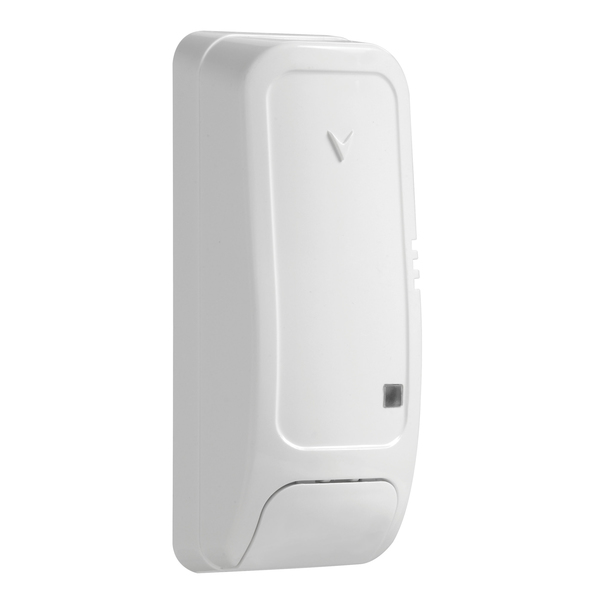
The final type of environmental sensors we'll be checking out are temperature sensors. These sensors look for unusually high or low temperatures that indicate a broken HVAC system. When a temperature sensor is used for high-temperature detection, it should not be confused with a heat detector that looks for extreme temperatures only associated with fires. Instead, the high-end for a temperature sensor will usually activate at around 90°F. When a temperature sensor is used for low-temperature detection, it will sometimes be referred to as a freeze sensor. On the low-end, a freeze sensor will typically activate at a slightly higher than the temperature at which water freezes, which is 32°F. This is done to give the end user a bit of notice so that they can take action before the pipes freeze. You can typically expect a freeze sensor to activate between 40°F and 45°F. Most temperature sensors will offer both high and low temperature detection. And just like in the previous category, there is a lot of crossover with flood sensors, so you may see some repeats from the previous selection.
Here are our top picks for temperature sensors.
|
Sensor Name |
Product Lineup |
Compatibility |
Range |
Encryption |
Notes |
DSC PG9905 |
PowerG | All IQ Panel 2 Plus | 2,000 Feet Open Air | 128-bit AES | PowerG Temperature Sensor w/ customizable high and low temperature detection. |
2GIG FT6e-345 |
2GIG eSeries |
2GIG GC3e |
350 Nominal Feet |
2GIG eSeries Encryption |
2GIG eSeries Flood Sensor w/ High Temperature Detection @ 95°F and Freeze Detection @ 41°F. |
Qolsys IQ Temp-S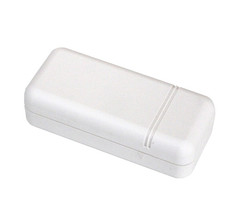 |
Qolsys S-Line Series | 319.5 MHz IQ Panel 2 Plus | 600 Nominal Feet | Qolsys S-Line Encryption | Qolsys S-Line Temperature Sensor w/ High Temperature Detection @ 100°F and Low Temperature Detection at 40°F. |
Honeywell 5800FLOOD |
Honeywell 5800 Series |
Lyric, GC3e, 345 MHz IQ2+ | 200 Nominal Feet |
None |
Honeywell 5800 Series Flood Sensor w/ High Temperature Detection @ 95°F and Freeze Detection @ 45°F. Has a reporting delay of 25 seconds. |
2GIG FT6-345 |
2GIG 345 MHz Series |
Lyric, GC3e, 345 MHz IQ2+ |
350 Nominal Feet |
None | 2GIG 345 MHz Flood Sensor w/ High Temperature Detection @ 95°F and Freeze Detection @ 41°F. |
Contact Us

Remember to contact us if you have any questions about environmental sensors or their compatibility. The best way to reach us is to email support@alarmgrid.com. This is also a good email to use if you are interested in starting new monitoring service. Remember that we are available to check email from 9am to 8pm ET M-F. We look forward to hearing from you!



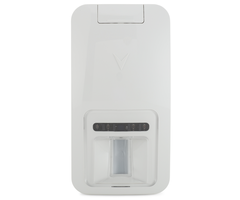


 For new users starting from scratch, the best option is typically to buy a complete
For new users starting from scratch, the best option is typically to buy a complete 
